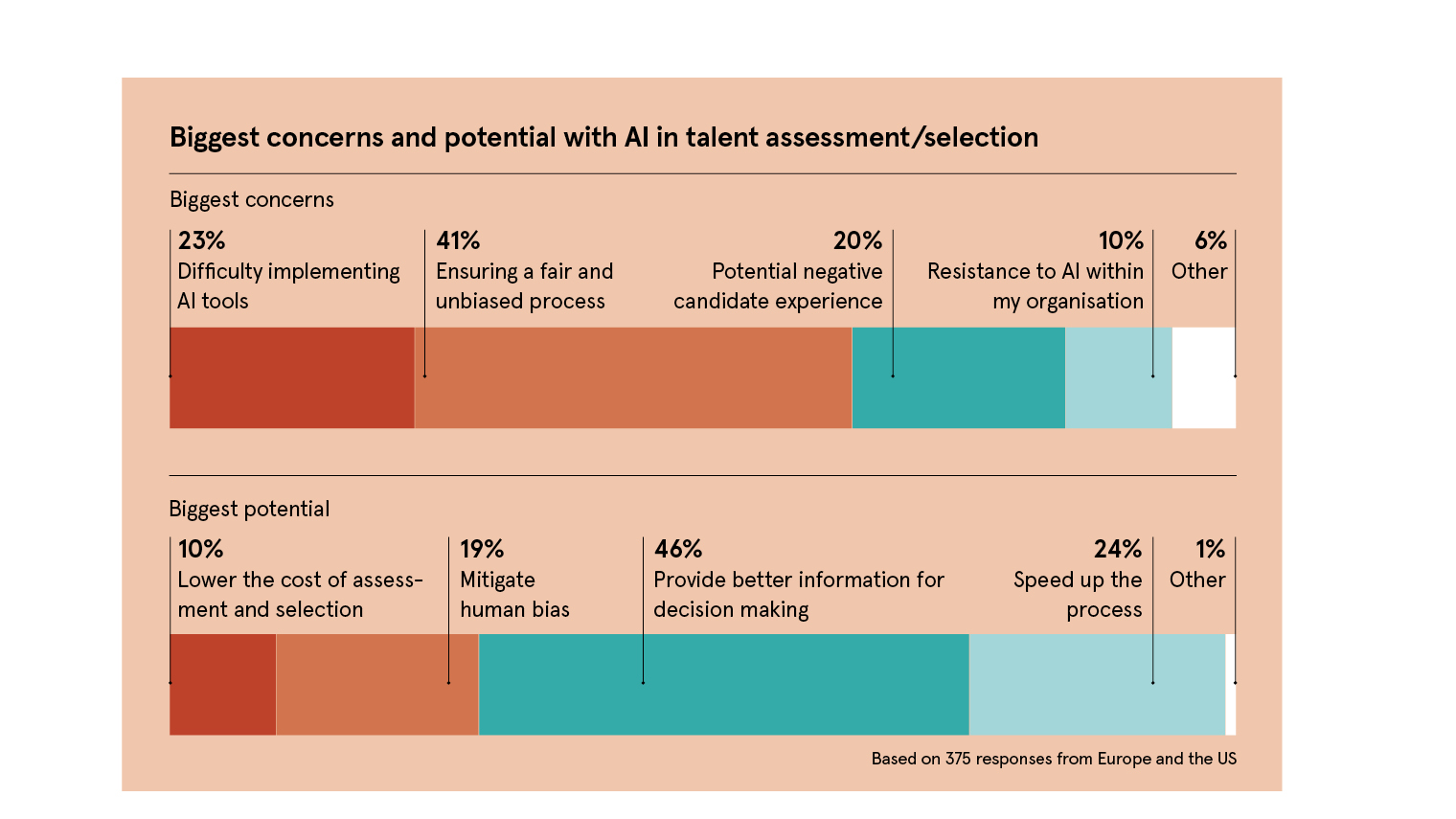Hiring processes have long been based on typical CV information, such as academic and professional achievements, followed by telephone and face-to-face interviewing. Now organisations are realising this has led to biased selection methodologies and resulted in the lack of diversity seen in workforces across multiple industries.
By looking for a narrow list of traits in a candidate, such as going to certain universities or past employment at particular firms, companies are restricting their ability to recruit from under-represented groups. Many hiring managers also unconsciously cede to the familiarity of hiring in their own image. When organisations are already made up predominantly of white men, it’s no surprise what they’re going to get.
“Selecting people like yourself leads to the same type of people across the organisation,” says David Barrett, chief commercial officer at Aon’s Assessment Solutions, which undertakes 30 million talent assessments each year in 90 countries and 40 languages. “That’s particularly true of professional organisations like banks or accounting firms. You often just see young or middle-aged white men running around in blue or grey suits.
“Some have tried to adopt quotas but, while good-intentioned, that too can become prejudicial because you stop looking at who is best for the job. Promotions also often have the effect of an old boys’ network. It’s beginning to change, but it’s still true that in many cases women face more prejudices and need to work much harder to succeed.”
Sophisticated assessment solutions, powered by artificial intelligence (AI) algorithms, are now driving the changes needed to transform talent selection and enable more diverse recruiting. By using machine intelligence to compare people profiles and behaviour competencies with job specifications and organisational demands, businesses can consider a much bigger pool of talent and make more objective decisions.

Aon works, for example, with a British engineering giant to help it build a more diverse workforce. By implementing Aon’s reduced biased methods and solutions, they have increased its female hires by 19 per cent, while participation in its talent assessments by underrepresented groups has surged by more than 200 per cent.
“A huge advantage in using standardised, systematic assessments with AI and predictive analytics is they are constantly loaded with more of the right people delivering better in-job results,” says Suzanne Courtney, managing director at Aon’s Assessment Solutions, UK. “We have now also achieved excellent outcomes in being able to use AI auto-scored video interviews to reliably replicate expert interviewers who are trained to be accurate and unbiased.”
Evidence-based research of this type, combined with mobile and AI technologies, is likely to herald the end of high-volume face-to-face screening interviews.
Far from hiring in the image of their existing managers, the savviest employers now seek to hire in the image of their customers. Indeed, 88 per cent of job seekers are more likely to buy from a company that gave them a positive candidate experience when applying for a role, according to a study by the Talent Board.
By combining marketing principles with talent acquisition, organisations can achieve a better diversity yield. Aon has taken a mobile-first approach, designing its assessments shorter and in the form of social messaging apps. While the completion rates of desktop platforms are typically 60 to 70 per cent, Aon’s are around 95 per cent and, the biggest increase in participation being among under-represented groups.
“When many companies look at what they were doing to assess talent five years ago, I think they will blush,” says Mr Barrett. “They wanted to help in the context of diversity and under-represented groups, but their way of doing it was ill thought through and didn’t address the business issue around why diversity is great. Our solutions, driven by AI algorithms and predictive analytics, give companies the objectivity to change the demographic of their workforce and the tools to recruit better talent at a lower cost.”
To find out more, please visit: assessment.aon.com/workplace-diversity
